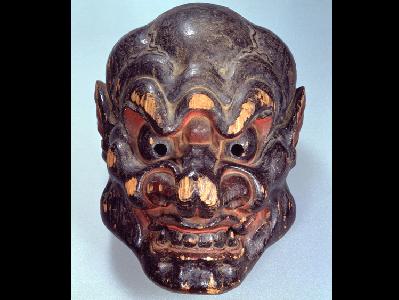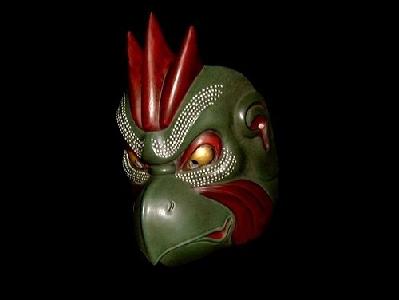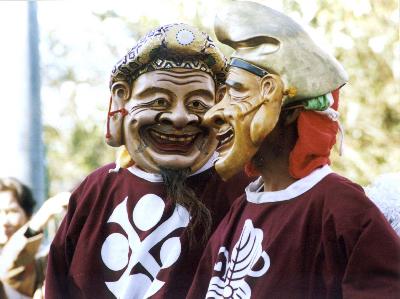|
Gigaku is a silent dance drama brought to Japan from China. It is performed without words, by dancers wearing big masks.
The masks used for Gigaku are called Gigaku masks and they are different from the masks used for Bugaku or Noh. Gigaku masks are bigger and they cover the head, while other masks only cover the face. There are a number of different masks, corresponding to different roles in the play, including the human, demon, shishi lion and Herculean man masks.
More than a hundred gigaku masks are preserved in such historically important temples as Shousouin, Houryuu-ji and Toudai-ji and they have been designated as National Treasures.
Gigaku flourished around the 6th century in Japan and it was performed extensively in the precincts of temples and shrines in order to promote understanding of the Buddhist teachings. Shousouin temple has a set of Gigaku masks used largely for the gigaku dance that was held on the occasion of Daibutsu Kaigan (a ceremony to consecrate a newly made Buddhist image) at Toudai-ji in 752.
There are essentially two methods of making gigaku masks; kibori (wood carving) and kanshitsu (dry lacquer). Many of the wood carving masks were made from camphor and paulownia wood.
| [+ADDRESS] | 
|

















